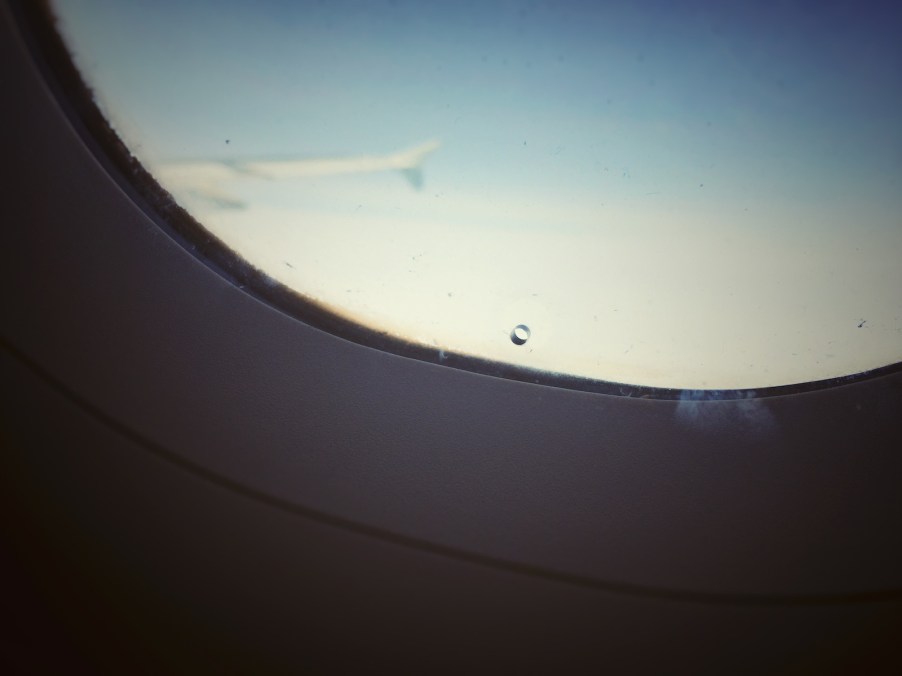
Why do airplane windows have pinholes?
So you were waiting for an airplane to take off the other day and noticed something odd: one or more tiny holes in the window next to your seat. As scary as it might be to see a hole in the plane window, this “bleed hole” actually serves an important purpose.
Airplanes have backups for almost every system. And this includes your window. Airplane windows are made of stretched acrylic. And most commercial airliners have three separate layers of acrylic making up each window. Why? In the rare instance that the exterior layer shatters, there will still be two layers of protection between you and the elements. But this multi-layer design presents two distinct engineering challenges.
The first challenge is pressure. Air at sea level is denser than the air at 20,000 feet. A commercial jet remains pressurized to the equivalent of 8,000 feet. But if there was thicker air trapped between the layers of the window, it would put a lot of stress on those layers of acrylic.
The tiny holes in the inner layers of acrylic allow the air to “bleed” out of that space and equalizes the pressure in the cabin and in the window. That is actually where the hole gets its name. Cabin crew member Henny Lim explained, “This is called the ‘bleed hole’. [It] helps to balance the pressure between the cabin and the outside air.”
But there’s a second reason that the bleed hole is important: Without it you couldn’t see out your window. Lim explained, “It also has another purpose which is to release moisture and stop frost/ condensation from blocking your view.” If the air between the window layers was sealed, the moisture in it would condense against the window’s cold outer layer. So that little hole allows both pressure and moisture to equalize between the cabin and window layers.
Obviously there’s a slight downside to these bleed holes. If for some reason, the outer layer of the window broke, the remaining layers would have a slight leak. But the plane would still maintain enough pressure that the pilots could decrease altitude and recover. And as importantly, you wouldn’t be exposed to the “wind” generated by flying through the sky at 500 mph.



